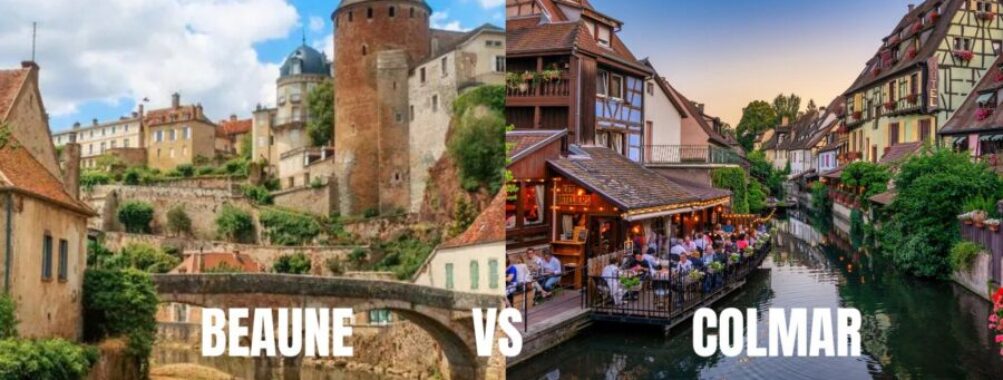
Beaune vs Colmar: Which French Wine Town Should You Visit in 2025?
Trying to choose between Beaune and Colmar? That’s not just picking between two gorgeous French towns. It’s a real toss-up: the beating heart of Burgundy’s wine scene versus Alsace’s storybook charm, with its candy-colored houses and a dash of German flair.
If you’re craving legendary Burgundy wines and want to eat your way through classic French cuisine, Beaune’s your place. But if strolling colorful streets, sipping Alsatian whites, and hopping over to the Black Forest sounds like your kind of trip, Colmar should top your list.
I’ve wandered both, and honestly, they’re like two different worlds. Beaune draws you into its ancient cellars and vine-laced hills, while Colmar lets you lose yourself among cobbles and pastel houses straight out of a fairytale.
And the food? Wow. Each town serves up flavors you’ll remember long after you’ve left.
Table of Contents
- Key Takeaways
- Beaune vs Colmar: Key Differences and Similarities
- Location and Setting
- Atmosphere and Ambiance
- Cultural Influences
- Wine Culture and Tasting Experiences
- Burgundy Wine Region Highlights
- Alsace Wine Traditions
- Wine Tasting Tours
- Unique Local Varietals
- Gastronomy and Local Specialties
- Regional Dishes to Try
- Escargot and Culinary Traditions
- Market Experiences
- Travel Logistics: Getting Between Beaune and Colmar
- Travel Time and Distance
- Best Transport Options
- Top Things to Do in Beaune
- Historic Sites and Museums
- Wine Cellars and Tastings
- Local Tours and Activities
- Top Things to Do in Colmar
- Medieval Old Town Exploration
- Wine Routes and Vineyards
- Local Art and Museums
- Frequently Asked Questions
- What are the unique architectural highlights to explore in Beaune and Colmar?
- How do the wine experiences differ between Beaune and Colmar’s vineyards?
- Can you compare the historical significance of Beaune and Colmar?
- What are the must-visit seasonal events or festivals in Beaune and Colmar?
- How does the culinary scene in Beaune stand out from that in Colmar?
- What hidden gems should travelers seek out in both Beaune and Colmar?
- Book Your Dream Experience
- More Travel Guides
Key Takeaways
- Beaune and Colmar deliver totally different vibes—both in wine and culture.
- Each town has distinct food traditions and local delicacies.
- You can travel between them pretty easily, so you could squeeze in both if you’re feeling ambitious.
Beaune vs Colmar: Key Differences and Similarities
Beaune and Colmar both claim a spot in France’s iconic wine regions, but they couldn’t feel more different once you’re actually there. Burgundy’s earthiness runs through Beaune, while Colmar bursts with Alsace’s colorful, quirky blend of French and German influences.
Location and Setting
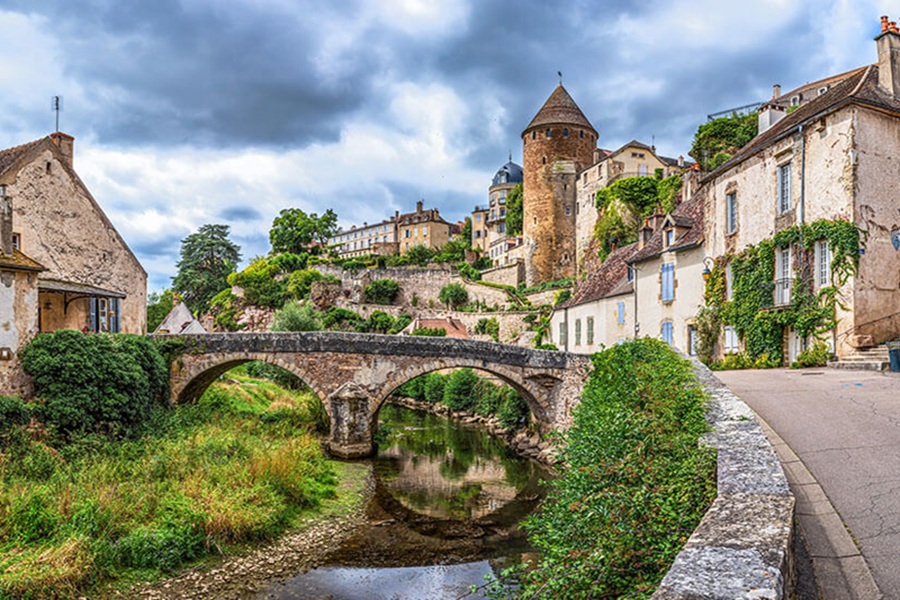
Beaune sits smack in the middle of Burgundy, cocooned by vineyards that churn out some of the world’s best Pinot Noir and Chardonnay. The town’s compact enough that you can walk everywhere, and the countryside is practically at your doorstep.
If you’re dreaming of wine tours, Beaune makes an incredibly easy base.
Colmar lives over in Alsace, hugging the German border. It’s a bit bigger and looks like it was plucked from a children’s book, with winding canals, half-timbered houses, and flowers everywhere you look.
People call it the “capital of Alsace wine,” and you’ll find little gems like Riquewihr and Eguisheim close by—totally worth a detour.
Getting between the two? Not exactly a quick jaunt. Driving from Beaune to Colmar takes more than three hours, so it’s not really practical to use one as your base for both.
Honestly, you’ll get more out of each if you just settle in and explore the region (driving directions).
Atmosphere and Ambiance
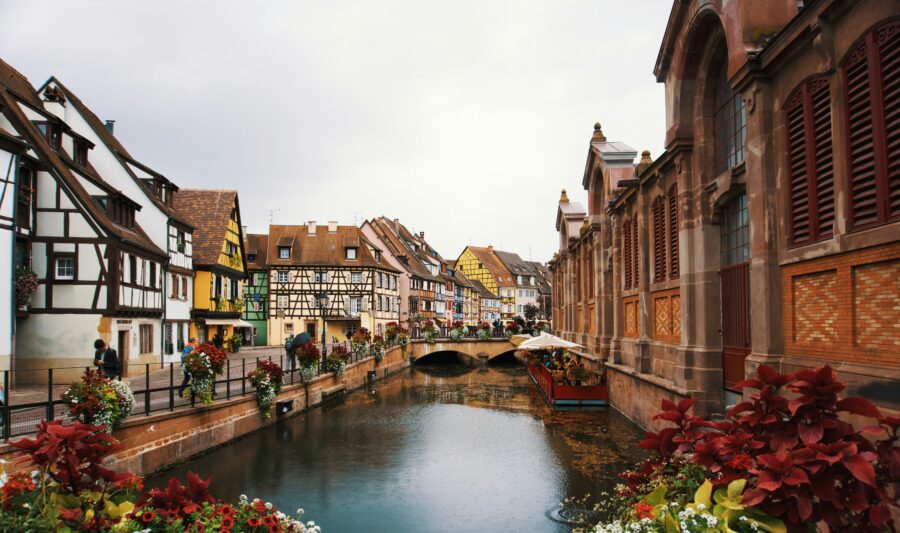
Beaune has this grounded, almost understated energy. Its medieval core, cobbled streets, and the famous Hospices de Beaune with that wild patterned roof set the scene.
You’ll find yourself slipping into wine cellars, lingering over tastings, and stretching dinners out for hours. It’s all about tradition here, not flash.
Colmar, though, feels like someone turned the color dial up to eleven. Strolling through the Old Town, you’re surrounded by pastel houses and crooked canals.
In summer, cafés spill into the squares, and the whole place buzzes. It’s the kind of town where you’ll want to wander without a plan.
If Beaune is for quietly savoring wine and history, Colmar is for soaking up charm and color. Both are stunning, but the mood is a world apart.
Cultural Influences
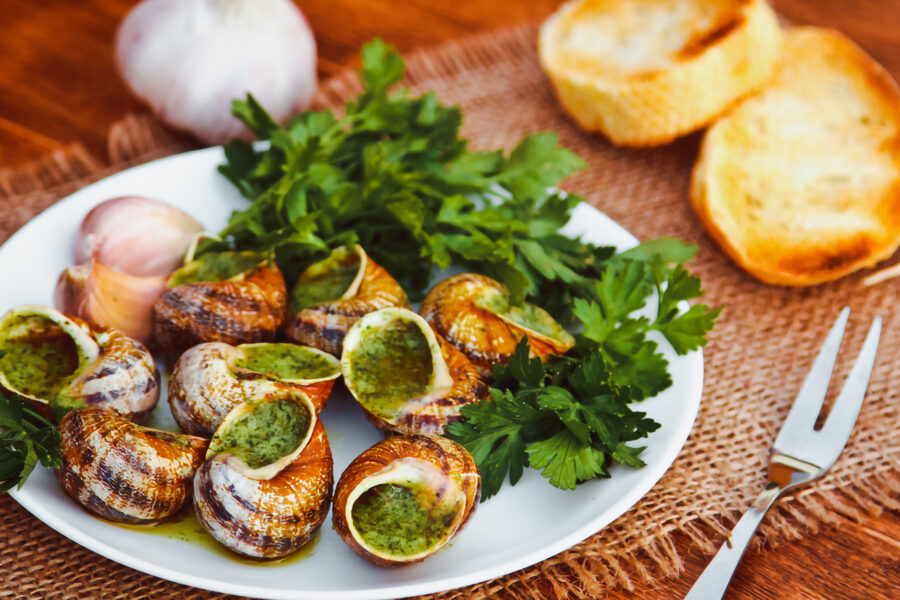
Burgundy, and Beaune at its center, wears its French heritage proudly. Royal history, Catholic roots—you can taste it in the food: boeuf bourguignon, escargot, and all those dishes that define classic French dining.
The culture here revolves around gastronomy and centuries-old wine-making. It’s unapologetically French.
Colmar, meanwhile, lives on the border, and its culture tells that story. Alsace has bounced between French and German hands for ages, and you see it in everything: half-timbered houses, street names, and what’s on your plate.
Here, you’ll dig into tarte flambée, sauerkraut, sausages, and still find French pastries for dessert.
That mix gives Colmar a vibe you won’t find anywhere else in France. If you’re curious about how two cultures can blend so seamlessly, Colmar’s a living, breathing example.
Wine Culture and Tasting Experiences
Beaune and Colmar both thrive on wine traditions that run deep. The experiences, though, couldn’t be more different.
Burgundy’s all about storied cellars and legendary labels, while Alsace invites you into cozy villages and pours bright whites in timbered tasting rooms.
Burgundy Wine Region Highlights
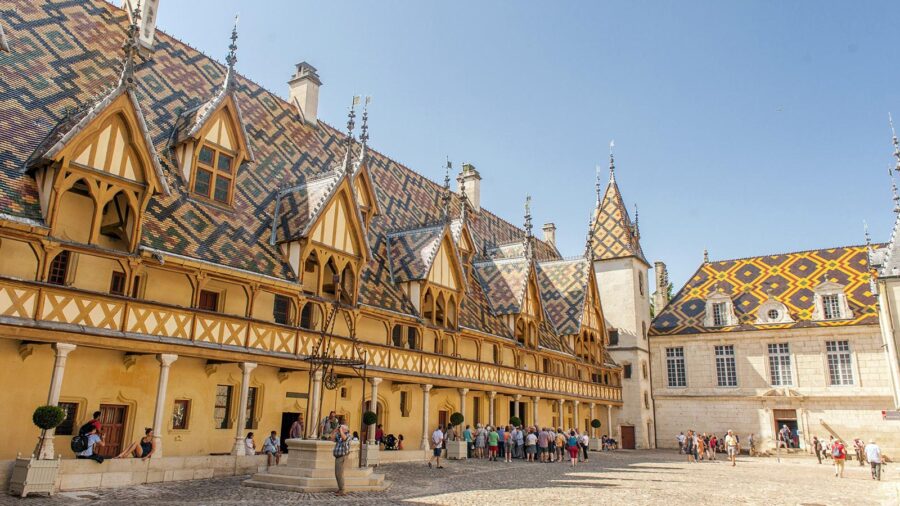
Beaune feels like a wine museum you can live in. Vineyards blanket the hills, and cobbled lanes lead you to cellars that have seen centuries pass.
The Hôtel-Dieu stands out, hosting a world-famous wine auction every November. Even outside auction season, it’s a must-see.
You’ll stumble upon négociants and domaines tucked behind ancient walls, and locals love to talk terroir—each vineyard plot, or climat, tells its own story.
In Beaune, you can taste your way through the Côte de Beaune and Côte de Nuits without traveling far. It’s a wine lover’s dream base.
Alsace Wine Traditions
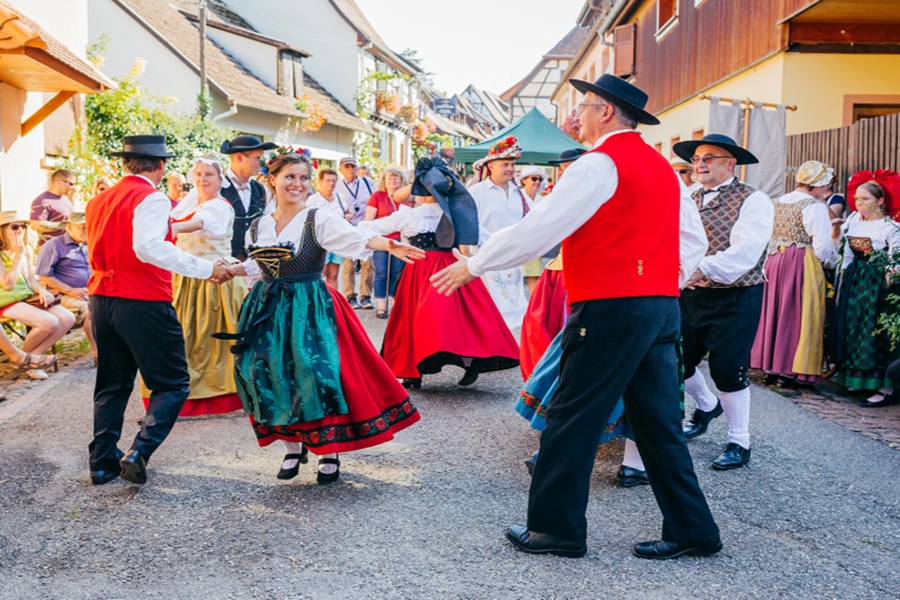
Colmar, by contrast, keeps things light and playful. Alsace focuses on whites—dry Riesling, fragrant Gewürztraminer, and crisp Pinot Blanc.
Pair a glass with tarte flambée, and you’ll see why these wines work so well with the local food.
As you wander Colmar, pastel houses hide tiny tasting rooms, often run by families. It’s way more intimate than Burgundy’s grand estates.
The Alsace Wine Route runs right through town, linking villages like Riquewihr and Turckheim. Each one has its own cellars and festivals, so you can hop from place to place, tasting subtle shifts in flavor and terroir.
It’s relaxed, friendly, and totally unpretentious.
Wine Tasting Tours
If you’re into guided tours, both towns deliver. In Beaune, you might pedal through vineyards on a bike tour or book a private tasting with a sommelier who’ll pour you Premier Cru and Grand Cru wines.
Some tours even throw in a classic Burgundian lunch—think hearty, rustic fare that sticks with you.
Colmar’s tours take a more laid-back approach. You might hop on a half-day trip along the Alsace Wine Route, stopping at a couple of small producers.
Some tours mix in history, with strolls through medieval towns. If you’re short on time, you can even squeeze in a tasting right in Colmar’s old town.
Alsace tours often cost less and cover more ground in a single day. Burgundy’s pricier, but you’re getting access to some of the world’s most coveted vineyards.
Unique Local Varietals
The grape varieties tell the story here. Burgundy’s all about Pinot Noir (for reds) and Chardonnay (for whites), grown in tiny, fiercely protected plots.
Wines here are labeled by village or vineyard, not grape, and every bottle feels like a geography lesson.
Alsace is refreshingly straightforward. Bottles are marked Riesling, Gewürztraminer, Pinot Gris, or Muscat right on the label.
Many tastings include Crémant d’Alsace—a sparkling wine that’s crisp, affordable, and totally underrated.
Here’s a quick look:
| Region | Main Grapes | Style of Wine | Typical Experience |
|---|---|---|---|
| Burgundy | Pinot Noir, Chardonnay | Complex, terroir-driven | Cellars & estates |
| Alsace | Riesling, Gewürztraminer, Pinot Gris, Muscat | Aromatic, fresh, food-friendly | Village tastings & wine route |
If bold reds are your thing, you’ll fall for Burgundy. If you love aromatic whites, Colmar and Alsace will keep your glass full and your palate happy.
And honestly, if you can swing both, you’ll get a wild contrast in how two regions just hours apart express their wine passions.
Gastronomy and Local Specialties
The food scene in Beaune and Colmar is as distinct as the wine. Beaune serves up the hearty, deep flavors of Burgundy, while Colmar leans into Alsatian comfort food with a German twist.
Each city has its own specialties, and honestly, eating here is half the fun.
Regional Dishes to Try
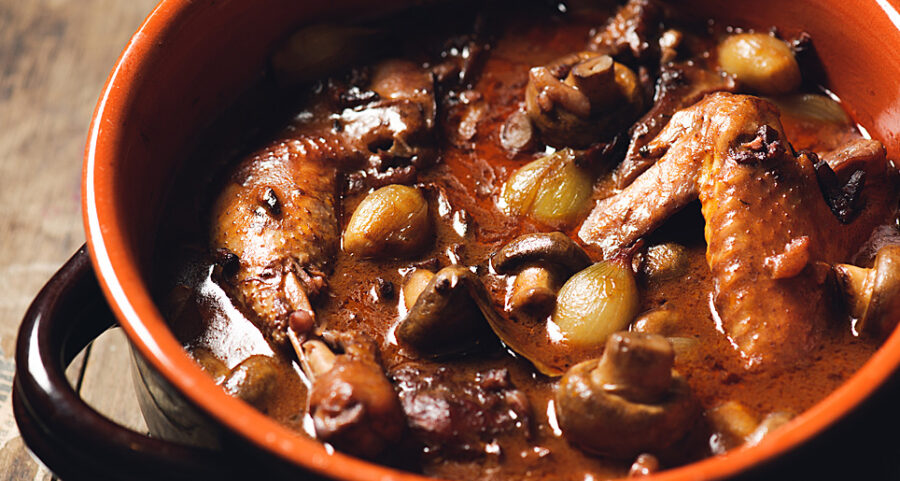
Beaune’s all about classics like boeuf bourguignon and coq au vin, slow-cooked in local wine for that rich, soul-warming flavor.
You’ll spot dishes featuring mustard from the old Fallot mill—still making it right in town.
Colmar’s comfort food takes a different route. Here you’ll dig into choucroute garnie (sauerkraut loaded with sausages and pork), flammekueche (a thin, crispy flatbread with cream, onions, and bacon), and baeckeoffe (a hearty casserole of meats and potatoes).
The German influence is everywhere, from the names to the flavors.
If you’re a wine fan, both regions spoil you rotten. Beaune’s vineyards are legendary, and Colmar sits right on the Alsace Wine Route, so you’re never far from a glass of something delicious.
Escargot and Culinary Traditions
Burgundy and escargot go hand in hand. In Beaune, you’ll spot escargots de Bourgogne on just about every menu—baked in garlic butter and parsley.
If you’ve never tried them, give it a shot. The snails are local, and the flavors are surprisingly addictive.
Colmar doesn’t fuss over snails, but it shines with big, communal meals. Alsatian Sunday lunches can last for hours, with endless courses and plenty of wine.
I once joined a family for lunch near Colmar, and the tarte flambée just kept coming until we were stuffed.
Both towns have a sweet tooth. Beaune is known for gingerbread and a blackcurrant liqueur called crème de cassis (local specialties).
Colmar tempts you with kougelhopf, a fluffy yeasted cake dusted with sugar—perfect with coffee.
Market Experiences
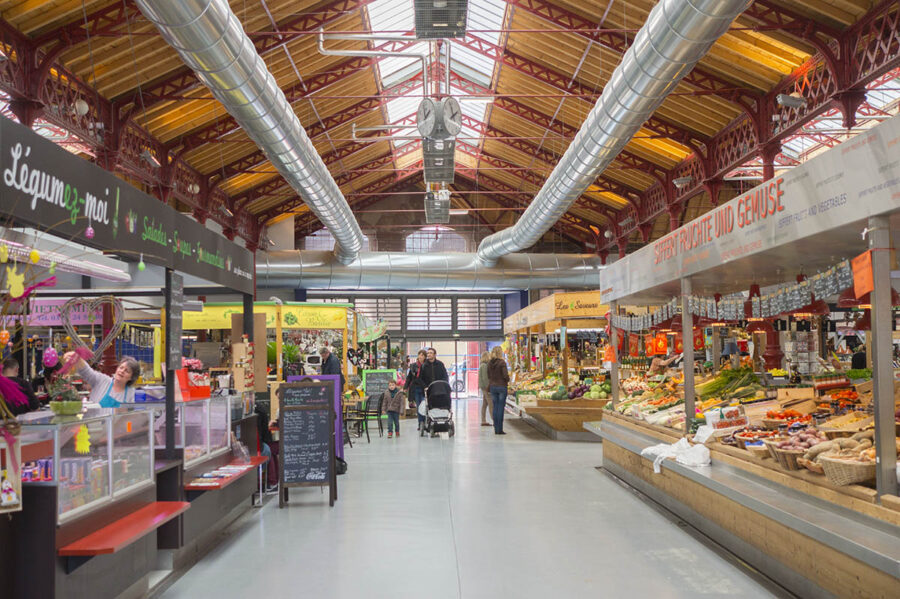
Markets bring the food scene to life. In Beaune, the Saturday market spills through the old town, packed with cheeses, truffles, and charcuterie.
Locals mingle, taste, and catch up—it’s a real slice of life.
Colmar’s Marché Couvert is smaller but just as lively. Grab a fresh pretzel, sample Alsatian sausages, or pick up some Munster cheese.
If you visit during the holidays, Colmar’s Christmas markets are pure magic, with spiced wine and bredele cookies everywhere.
If you love to cook, both towns let you pick up local ingredients and try your hand at regional recipes.
A wedge of Munster from Colmar or some herbs from Beaune makes a great edible souvenir. Honestly, wandering these markets is one of my favorite ways to soak up the local vibe.
Travel Logistics: Getting Between Beaune and Colmar
Traveling between Beaune and Colmar is pretty straightforward. The best route depends on what matters most to you—speed, budget, or the freedom to wander.
These two towns sit in different wine regions, and while they’re not that far apart, your choice of route can really shape the feel of your trip.
Travel Time and Distance
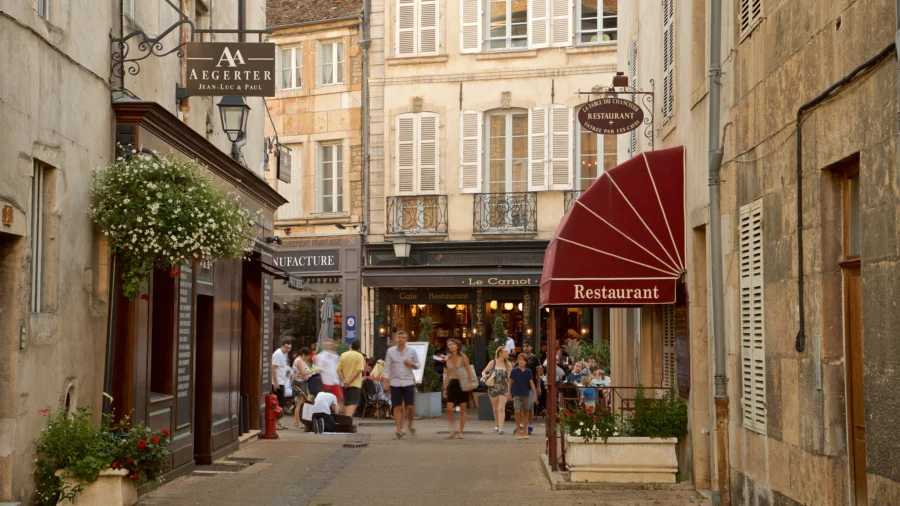
Beaune and Colmar sit about 272 km (169 miles) apart if you’re going by road. Most days, I cover that drive in about 2.5 to 3 hours, but let’s be honest—if you’re anything like me and can’t resist stopping for a quick espresso or a photo of a sunflower field, you’ll want to lean toward the longer end.
Trains tend to be a bit quicker and way more predictable. There aren’t a ton of direct trains, but you’ll usually get from Beaune to Colmar in just over 2 hours with a quick connection thrown in. The fastest option clocks in at about 2 hours 4 minutes—yep, I checked Trainline.
Here’s the lowdown:
| Mode | Time | Distance | Notes |
|---|---|---|---|
| Car | 2.5–3 hrs | 272 km | Flexibility, scenic stops |
| Train | ~2 hrs | 230 km rail | Comfortable, no traffic |
If you’re in a rush, the train wins. But if you want to soak up the countryside, driving is the way to go.
Best Transport Options
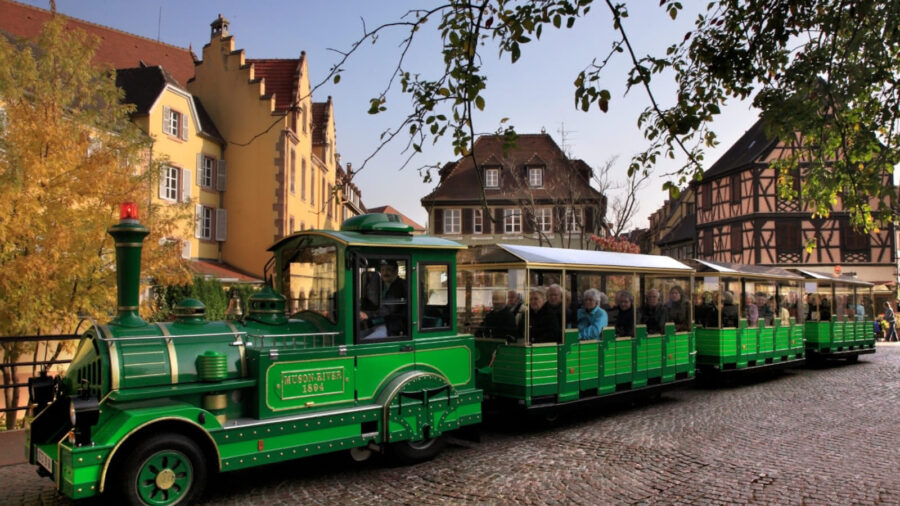
You’ve got two main choices: train or car. The train makes things easy—just grab a ticket, hop on, and let someone else do the work. It’s a lifesaver if you don’t want to mess with parking in Colmar’s old town.
Driving, though, is a whole different adventure. The road winds through vineyards and sleepy villages. You’ll see places you’d never spot from a train window. I usually book a rental through Booking.com because it’s just easier to see what’s available.
I’ve done both, and honestly, it depends on the vibe. One trip, I needed to make it in time for a wine tasting, so I took the train—smooth sailing. Another time, I drove and stumbled on a tiny bakery in a village near Dijon. I still dream about those pastries.
If you’re hitting the road, pack some travel gear to make life easier—a phone holder, a decent water bottle, maybe a playlist for the drive. Trust me, those little comforts add up on a road trip.
If you’re a comparison junkie, take a peek at KAYAK to weigh up trains, cars, and even flights (though flying between Beaune and Colmar is, let’s face it, unnecessary).
Pick your style—speed or scenery. Either way, you’re in for a good time.
Top Things to Do in Beaune
Beaune is small but mighty, packed with history, wine, and a laid-back vibe. You’ll wander past medieval landmarks, duck into cellars full of Burgundy’s best, and still have time to explore the countryside at your own pace.
Historic Sites and Museums
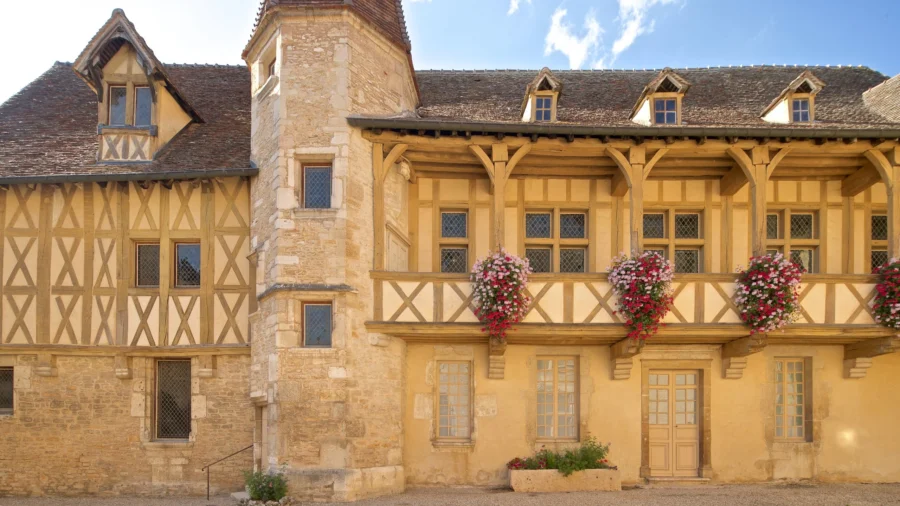
The Hôtel-Dieu (Hospices de Beaune) absolutely steals the show. They built it in the 15th century as a hospital, but now it’s a museum with those famous glazed roof tiles and an interior that feels like a time capsule. I wandered through grand halls, peered at old wooden beds, and marveled at a pharmacy that looks like it could still fill a prescription.
The Musée du Vin de Bourgogne sits in a former palace, and it’s a crash course in Burgundy’s wine culture. From grape-growing to ancient tools, you’ll get a real sense of how much (or how little!) has changed over the centuries.
Don’t skip the medieval ramparts. The old walls circle Beaune, and you can stroll them on foot, spotting towers and bastions that once protected the town. It’s a quiet walk, but it connects you to Beaune’s story in a way museums just can’t.
Wine Cellars and Tastings
Beaune is Burgundy’s wine heart, so tasting isn’t optional—it’s practically a rite of passage. Big négociants like Patriarche open their candlelit cellars to visitors. I still remember the feeling of walking through those tunnels, rows of dusty bottles stretching on forever.
The smaller family-run domaines offer something more personal. I’ve had some of my best conversations with winemakers in those cozy tasting rooms, learning about vintages and local gossip. The wines? Everything from crisp Chardonnay to those silky Pinot Noirs Burgundy does so well.
Short on time? Join a guided tasting and sample several producers in one go. It’s a solid way to compare styles without bouncing all over town.
Local Tours and Activities
Beaune is compact, so you can see a lot on foot. But if you want to really soak in the vineyards, try a bike tour through villages like Pommard or Meursault. Pedaling past endless vines gives you a sense of scale you just can’t get in town.
If bikes aren’t your thing, day trips mix wine tastings with castle stops or scenic drives through the Côte d’Or. Handy if you don’t want to rent a car.
For those who like a bit of structure, Rick Steves tours often use Beaune as a Burgundy base. I’ve met travelers who loved the mix of guided activities and free time. Even if you go solo, there are plenty of walking tours to help you spot details you’d probably miss otherwise.
Top Things to Do in Colmar
Colmar just pulls you in with its storybook houses, peaceful canals, and that unmistakable Alsatian wine culture. One minute you’re wandering cobblestones, the next you’re sipping Riesling in a centuries-old cellar or standing in front of a medieval masterpiece.
Medieval Old Town Exploration
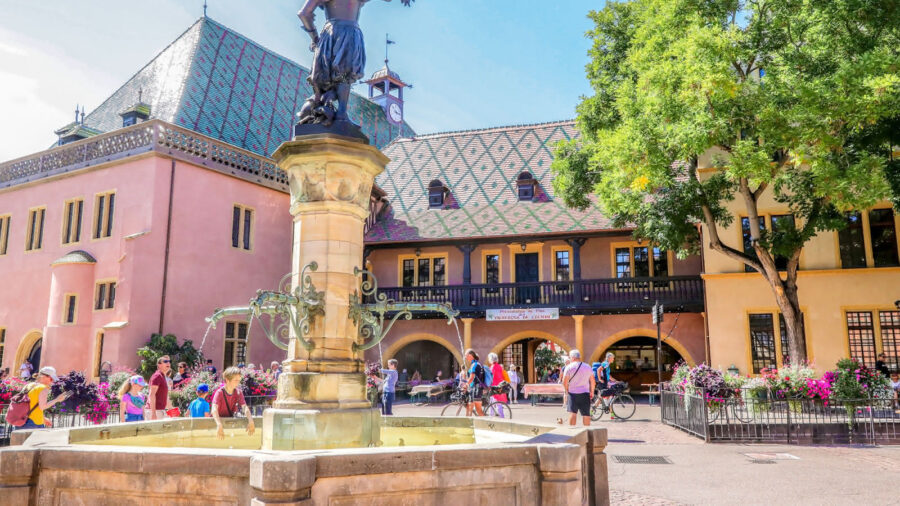
The Old Town is Colmar’s beating heart. Those pastel half-timbered houses almost don’t look real, especially around the Petite Venise canal. You can cover most of it on foot, which means you’ll have time to spot the quirky signs and carved facades over shop doors.
Start at the Koïfhus (Old Customs House), then make your way to the Pfister House and Maison des Têtes. These aren’t just pretty buildings—they tell the story of Colmar’s merchant past.
Visit in spring or summer and you’ll see flowers spilling from every window box. The place turns into a living postcard. If you’re into photography, get ready to fill your camera roll fast.
Wine Routes and Vineyards
Colmar is right on the Alsace Wine Route, so you can plan a day of tastings without much effort. Riesling and Gewürztraminer steal the show, but don’t skip the Pinot Gris or the bubbly Crémant d’Alsace—it’s delicious and way more affordable than Champagne.
Most people rent a bike or hop a shuttle to villages like Eguisheim or Riquewihr. Each spot has its own wineries, and the cellar doors are usually open. I’ve ended up chatting with winemakers and their families more than once—Alsace is just that kind of place.
Prefer something organized? Book a tour that mixes vineyard stops with a splash of local history. It’s an easy way to see more villages in an afternoon.
Local Art and Museums
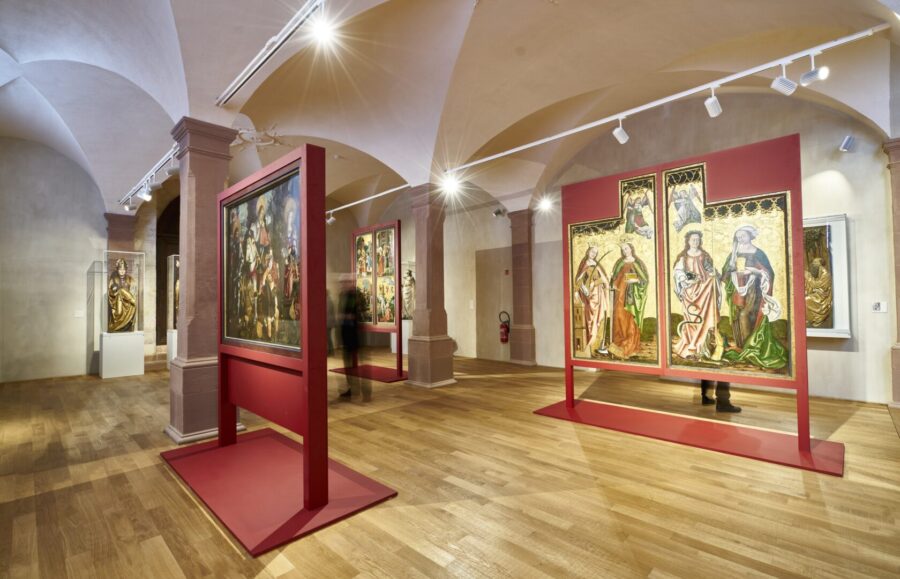
Colmar isn’t just wine and pretty streets—it’s an art lover’s treat, too. The Unterlinden Museum is the big one, home to the famous Isenheim Altarpiece, a 16th-century masterpiece that’ll stop you in your tracks. Even if you’re not a museum person, this place is special.
Don’t miss the Bartholdi Museum, dedicated to the guy behind the Statue of Liberty. It’s tucked inside his old house and gives you a peek at his creative world.
For a quieter vibe, check out the Dominican Church and Martin Schongauer’s “Madonna of the Rose Bush.” It’s smaller and less crowded than Unterlinden, perfect for a little art and reflection.
Frequently Asked Questions
Beaune and Colmar each bring something unique—medieval architecture, wine culture, lively festivals, and local food traditions. Their contrasts in history, atmosphere, and those little details make both towns worth a visit.
What are the unique architectural highlights to explore in Beaune and Colmar?
Beaune’s Hôtel-Dieu, with its patterned roof tiles and Gothic flair, is a real showstopper. Wander the old streets and you’ll spot stone houses with wrought-iron signs that look straight out of a fairytale.
Colmar charms with timber-framed houses in soft colors. The canals in “Little Venice” make it feel like a dream. I remember wandering there at dusk and thinking I’d walked into a painting.
How do the wine experiences differ between Beaune and Colmar’s vineyards?
Beaune is Burgundy’s wine capital, where Pinot Noir and Chardonnay rule. Tastings feel steeped in tradition, often in centuries-old cellars. There’s a certain formality, but it’s all part of the history.
Colmar, in Alsace, is more relaxed. Here, Riesling, Gewürztraminer, and Pinot Gris shine. Wineries are smaller, often family-run, and tastings can turn into backyard chats with the winemaker’s family.
Can you compare the historical significance of Beaune and Colmar?
Beaune played a huge role in Burgundy’s medieval wealth, and the Hospices de Beaune still stands as a symbol of that era. The annual wine auction there draws a global crowd every year.
Colmar’s history feels more like a blend—caught between France and Germany, you see it in the buildings and taste it in the food. The town also celebrates Auguste Bartholdi, the sculptor behind the Statue of Liberty.
What are the must-visit seasonal events or festivals in Beaune and Colmar?
Beaune’s Hospices de Beaune Wine Auction in November is legendary. The whole town buzzes with tastings and dinners. Summer brings music festivals tucked into courtyards and cloisters.
Colmar’s Christmas markets are some of the best in France—absolutely magical. In summer, the Colmar International Festival brings in classical musicians, and the Alsace Wine Fair is a top pick if you’re visiting in August.
How does the culinary scene in Beaune stand out from that in Colmar?
Beaune’s food is pure Burgundy—rich, hearty dishes like boeuf bourguignon and escargots, all washed down with local wine. Even the mustard packs a punch.
Colmar’s cuisine leans Alsatian, so you’ll find tarte flambée, choucroute garnie, and sweet kougelhopf. It’s a tasty mix of French and German, and honestly, it feels a bit lighter than Burgundy’s fare.
In Beaune, you really shouldn’t skip those tiny wine bars tucked away on the side streets. Some barely fit more than a handful of people, but honestly, that’s where you’ll stumble on bottles you’d never find anywhere else.
The old town’s ramparts? They wrap around the city, and I love how they offer a peaceful walk when you just want to escape the crowds for a bit.
Colmar’s a place that practically begs you to wander off the beaten path. Step past the center and into the neighborhoods where locals actually live.
You might catch the smell of fresh kugelhopf wafting from a little bakery, or spot a hidden courtyard most tourists never notice. It’s the kind of place where you suddenly realize, “Wait, is this even on the map?”
If you’ve got time, hop over to villages like Eguisheim or Turckheim. They’re close enough for a quick trip, and honestly, it can feel like you’ve uncovered your own little secret.
When it comes to getting between Beaune and Colmar, ViaMichelin does a good job laying out routes, distance, and costs if you’re driving.
Prefer the train? Both Trainline and Rome2Rio break down connections and ticket prices, so you can just pick what works for you.



